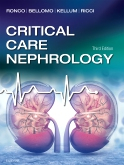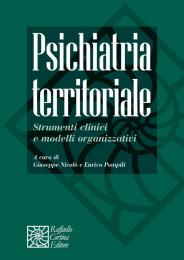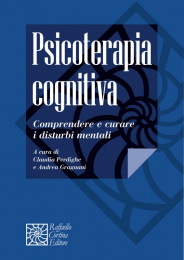|
Section 1: Principles of Critical Care
Chapter 1 - The Critically Ill Patient
Chapter 2 - The Pathophysiologic Foundations of Critical Care
Chapter 3 - Mechanical Ventilation
Chapter 4 - Hemodynamic Support in the Critically Ill Patient
Chapter 5 - Monitoring Organ Dysfunction in Critical Care
Chapter 6 - Kidney-Specific Severity Scores
Section 2: Principles of Renal Physiology
Chapter 7 - The Physiology of the Glomerulus
Chapter 8 - The Physiology of the Loop of Henle
Chapter 9 - Glomerular Filtration Rate, Renal Functional Reserve, and Kidney Stress Testing
Chapter 10 - Renal Energy Consumption and Metabolism
Section 3: Epidemiology of Acute Kidney Injury in Critical Care
Chapter 11 - Acute Kidney Injury: From Clinical to Molecular Diagnosis
Chapter 12 - Community- and Hospital-Acquired Acute Kidney Injury
Chapter 13 - Epidemiology of Acute Kidney Injury in Critically Ill Patients
Chapter 14 - Acute Kidney Injury in Patients With Chronic Kidney Disease
Section 4: Exposures and Patient Susceptibility
Chapter 15 - Genetic Predisposition for Acute Kidney Injury (AKI)
Chapter 16 - Risk Factors and Risk Assessment in Acute Kidney Injury
Chapter 17 - Experimental Models of Acute Kidney Injury
Section 5: Humoral and Cellular Mechanisms of Kidney Damage
Chapter 18 - Renal Blood Flow and Perfusion Pressure
Chapter 19 - Humoral Mediators in Sepsis
Chapter 20 - Cell Death Pathways: Apoptosis and Regulated Necrosis
Chapter 21 - Pathogen-Associated Molecular Patterns, Damage-Associated Molecular Patterns, and Their Receptors in Acute Kidney Injury
Section 6: Clinical Course of Acute Kidney Injury and Biomarkers
Chapter 22 - Acute Kidney Disease
Chapter 23 - Acute Kidney Disease, Renal Recovery, and Post-Acute Kidney Injury Care
Chapter 24 - The Role of Biomarkers in the Diagnosis and Management of Acute Kidney Injury
Chapter 25 - Functional Biomarkers
Chapter 26 - Damage Biomarkers
Chapter 27 - Kidney Stress Biomarkers
Section 7: Mechanisms of Repair or Progression
Chapter 28 - Renal Repair and Recovery
Chapter 29 - Maladaptive Repair and Progression to CKD
Chapter 30 - Biomarkers of Recovery and/or Repair Following Acute Kidney Injury
Section 8: Renal Histopathology in Acute Kidney Injury
Chapter 31 - Practical Considerations of Renal Biopsies in Critical Care Patients
Chapter 32 - Localization of Injury and Repair Pathways
Section 9: Imaging Techniques in Critical Care Nephrology
Chapter 33 - Ultrasonography and Doppler Techniques
Chapter 34 - Contrast-Enhanced Renal Ultrasound
Chapter 35 - Traditional Radiology, Computed Tomography, and Magnetic Resonance Imaging in Critical Care Nephrology
Chapter 36 - Radionuclides Diagnostic Techniques
Section 10: Clinical Syndromes and Acute Kidney Injury
Chapter 37 - Multiple Organ Dysfunction
Chapter 38 - Acute Kidney Injury in Burns and Trauma
Chapter 39 - Drug-Induced Acute Kidney Injury
Chapter 40 - Acute Kidney Injury in Pregnancy
Chapter 41 - Acute Kidney Injury in Oncology and Tumor Lysis Syndrome
Chapter 42 - Acute Kidney Injury in Cardiac Surgery
Chapter 43 - Acute Kidney Injury in Major Surgery
Chapter 44 - Acute Kidney Injury in Heart Failure
Chapter 45 - Acute Kidney Injury in Cirrhosis
Chapter 46 - Acute Renal Failure in Kidney Transplant Recipients
Chapter 47 - Acute Glomerulonephritis
Chapter 48 - Contrast-Induced Acute Kidney Injury
Chapter 49 - Abdominal Compartment Syndrome
Chapter 50 - Hemolytic Uremic Syndrome
Section 11: Prevention and Treatment: General Treatment Concepts
Chapter 51 - Nonpharmacologic Management of Acute Renal Injury
Chapter 52 - Novel Drugs for Acute Kidney Injury
Chapter 53 - Remote Ischemic Preconditioning
Section 12: Fluid and Electrolytes
Chapter 54 - Blood Biochemistry: Measuring Major Plasma Electrolytes
Chapter 55 - Assessment of Urine Biochemistry
Chapter 56 - Disorders of Sodium and Water Balance
Chapter 57 - Disorders of Potassium and Magnesium
Chapter 58 - Calcium and Phosphate Physiology
Chapter 59 - Principles of Fluid Therapy
Chapter 60 - Blood Transfusion Therapy
Chapter 61 - Loop and Thiazide Diuretics
Chapter 62 - Vaptans and the Treatment of Hyponatremia
Chapter 63 - Aldosterone Antagonists, Amiloride, and Triamterene
Section 13: Acid-Base
Chapter 64 - Laboratory Tests: Blood Gases, Anion Gap, and Strong Ion Gap
Chapter 65 - Acid-Base Physiology and Diagnosis of Disorders
Chapter 66 - Metabolic Acidosis
Chapter 67 - Hyperlactatemia and Lactic Acidosis
Chapter 68 - Renal Tubular Acidosis
Chapter 69 - Metabolic Alkalosis
Chapter 70 - Respiratory Acid-Base Disorders
Chapter 71 - Iatrogenic and Poison-Derived Acid Base Disorders
Section 14: Metabolism and Nutrition in Critical Illness and Acute Kidney Injury
Chapter 72 - Energy Requirement and Consumption in the Critically Ill Patient
Chapter 73 - Impact of Renal Replacement Therapy on Metabolism and Nutrient Requirements in the Critically Ill Patient
Chapter 74 - Amino Acid Turnover, Protein Metabolism, and Nitrogen Balance in Acute Kidney Injury
Chapter 75 - Carbohydrates and Lipids
Chapter 76 - Endocrinology of the Stress Response During Critical Illness
Chapter 77 - Anemia of Critical Illness
Chapter 78 - Management of Nutrition in Acute Kidney Injury and Renal Replacement Therapy
Chapter 79 - Blood Glucose Control in Critical Care
Chapter 80 - Enteral Nutrition
Section 15: Infectious Diseases and Sepsis
Chapter 81 - Microbiologic Considerations in the Intensive Care Patient
Chapter 82 - Innate Immunity and the Kidney
Chapter 83 - Adaptive Immunity and Critical Illness
Chapter 84 - Spontaneous Bacterial Peritonitis and Hepatorenal Syndrome
Chapter 85 - Tropical Infections Causing Acute Kidney Injury
Chapter 86 - Sepsis and Septic Shock
Chapter 87 - Complement and Its Consequences in Sepsis
Chapter 88 - Coagulation Abnormalities in Sepsis
Dysfunction of the Kidney in Sepsis
Book chapterFull text access
Chapter 89 - Endothelial Dysfunction of the Kidney in Sepsis
Chapter 90 - Sepsis-Induced Acute Kidney Injury
Chapter 91 - Recommendations for Sepsis Management
Chapter 92 - Principles of Antimicrobial Prescription in Intensive Care Unit Patients With Acute Kidney Injury
Chapter 93 - Renal Replacement Therapy for Septic Acute Kidney Injury
Chapter 94 - Blood Purification for Sepsis
Chapter 95 - Management of Infection in Patients With Kidney Transplant
Chapter 96 - Critical Care Viral Infections
Chapter 97 - Principles of Antibiotic Prescription in Intensive Care Unit Patients and Patients With Acute Renal Failure
Section 16: Acute Intoxication and Poisoning
Chapter 98 - Drugs and Antidotes in Acute Intoxication
Chapter 99 - Extracorporeal Therapies in Acute Intoxication and Poisoning
Chapter 100 - Plasmapheresis in Acute Intoxication and Poisoning
Chapter 101 - Poisoning: Kinetics to Therapeutics
Section 17: Acute Kidney Injury and Organ Crosstalk
Chapter 102 - Bleeding and Hemostasis in Acute Renal Failure
Chapter 103 - Gastrointestinal Problems in Acute Kidney Injury
Chapter 104 - Cardiovascular Problems in Acute Kidney Injury
Chapter 105 - Water and Electrolyte Disturbances in Acute Renal Failure
Chapter 106 - Neurologic Problems in Acute Renal Failure
Chapter 107 - Immunologic and Infectious Complications of Acute Kidney Injury
Chapter 108 - Cellular Response to Acute Kidney Injury
Section 18: Interaction of the Heart and the Kidney
Chapter 109 - Heart-Kidney Cross-Talk
Chapter 110 - Classification of Cardiorenal Syndrome
Chapter 111 - Cardiorenal Syndrome Type 1
Chapter 112 - Cardiorenal Syndrome Type 2
Chapter 113 - Cardiorenal Syndrome Type 3
Chapter 114 - Cardiorenal Syndrome Type 4
Chapter 115 - Cardiorenal Syndrome Type 5
Chapter 116 - Renal Function During Cardiac Mechanical Support and Artificial Heart
Chapter 117 - The Kidney in Diastolic Dysfunction
Chapter 118 - Principles of Diuretic Management in Heart Failure
Chapter 119 - Management of Overhydration in Heart Failure Patients
Chapter 120 - Recent Advances for Stroke Prevention in Patients With Atrial Fibrillation and Advanced Kidney Disease
Section 19: Interaction of the Lung and Kidney
Chapter 121 - Lung-Kidney Cross-Talk
Chapter 122 - The Kidney During Mechanical Ventilation
Chapter 123 - Extracorporeal Membrane Oxygenation and Renal Function
Chapter 124 - Extracorporeal Carbon Dioxide Removal
Chapter 125 - Extracorporeal Membrane Oxygenation and Continuous Renal Replacement Therapy in Adults and Children
Chapter 126 - Pulmonary-Renal Syndrome
Section 20: The Liver and the Kidney
Chapter 127 - Liver-Kidney Interaction
Chapter 128 - Pathophysiology and Management of the Hepatorenal Syndrome
Chapter 129 - Kidney Dysfunction After Liver Transplantation
Chapter 130 - Extracorporeal Liver Support Devices
Section 21: Interaction of the Brain and the Kidney
Chapter 131 - Treatment of Combined Acute Renal Failure and Cerebral Edema
Chapter 132 - Renal Protection in the Organ Donor
Chapter 133 - Effect of Extracorporeal Therapies on the Brain
Section 22: Fluid Balance and its Management in the Critically Ill
Chapter 134 - Components of Fluid Balance and Monitoring
Chapter 135 - Noninvasive Methods of Fluid Status Assessment in Critically Ill Patients
Chapter 136 - Management of Fluid Overload in Cardiorenal Patients: The Five B Approach
Chapter 137 - Mechanical Fluid Removal
Section 23: General Principles of Acute Renal Replacement Therapy
Chapter 138 - Indications for Renal Replacement Therapy in the Critically Ill
Chapter 139 - Principles of Extracorporeal Circulation and Transport Phenomena
Chapter 140 - Membranes and Filters for Use in Acute Renal Failure
Chapter 141 - Continuous Renal Replacement Therapy Machine Technology
Chapter 142 - Principles of Anticoagulation in Extracorporeal Circuits
Chapter 143 - Dialysis Solutions and Replacement Fluids
Chapter 144 - Starting and Stopping Renal Replacement Therapy in the Critically Ill
Chapter 145 - The Concept of Renal Replacement Therapy Dose and Efficiency
Chapter 146 - Quantification of Acute Renal Replacement Therapy
Chapter 147 - Principles of Pharmacodynamics and Pharmacokinetics of Drugs Used in Extracorporeal Therapies
Chapter 148 - Ethical Considerations in Acute Renal Replacement Therapy
Section 24: Intermittent Renal Replacement Therapies
Chapter 149 - Intermittent Techniques for Acute Dialysis
Chapter 150 - Solute and Water Transport in Hemodialysis: Dialyzers, Flow Distribution, and Cross-Filtration
Chapter 151 - Biocompatibility of the Dialysis System
Chapter 152 - Composition of Hemodialysis Fluid
Chapter 153 - Indications for and Contraindications to Intermittent Hemodialysis in Critically Ill Patients
Chapter 154 - Technical and Clinical Complications of Intermittent Hemodialysis in the Intensive Care Unit
Chapter 155 - Correction of Water, Electrolyte, and Acid-Base Derangements by Hemodialysis and Derived Techniques
Chapter 156 - Urea Kinetics, Efficiency, and Adequacy of Hemodialysis and Other Intermittent Treatments
Chapter 157 - Assessment of Fluid Status and Body Composition and Control of Fluid Balance With Intermittent Hemodialysis in the Critically Ill Patient
Chapter 158 - Outcomes of Intermittent Hemodialysis in Critically Ill Patients With Acute Kidney Injury
Chapter 159 - Hybrid Dialysis Techniques in the Intensive Care Unit
Chapter 160 - The Role of Plasmapheresis in Critical Illness
Chapter 161 - Cascade Filtration for ABO Incompatible Transplant
Chapter 162 - Nursing Issues and Procedures in Continuous Renal Replacement Therapy
Section 25: Continuous Renal Replacement Therapies (CRRT)
Chapter 163 - Indications for Continuous Renal Replacement Therapy: Renal Replacement Versus Renal Support
Chapter 164 - Beginning and Ending Continuous Renal Replacement Therapy in the Intensive Care Unit
Chapter 165 - Solute and Water Kinetics in Continuous Therapies
Chapter 166 - Continuous Renal Replacement Therapy: Modalities and Their Selection
Chapter 167 - Vascular Access for Acute Renal Replacement Therapy
Chapter 168 - Anticoagulation Strategies for Continuous Renal Replacement Therapy
Chapter 169 - Nursing Strategies to Prevent Coagulation of the Extracorporeal Circuit
Chapter 170 - Adequacy of Continuous Renal Replacement Therapy: Prescription and Delivery
Chapter 171 - High-Volume Hemofiltration in the Intensive Care Unit
Chapter 172 - Pulse High-Volume Hemofiltration in Management of Critically Ill Patients With Severe Sepsis or Septic Shock
Chapter 173 - High Cutoff Membranes for Mediators Removal
Chapter 174 - Clinical Effects of Continuous Renal Replacement Therapies
Chapter 175 - Antibiotic Adjustment in Continuous Renal Replacement Therapy
Chapter 176 - Nomenclature: Basic Principles
Chapter 177 - Nomenclature: Techniques
Section 26: Peritoneal Dialysis in the Intensive Care Unit
Chapter 178 - Peritoneal Dialysis System
Chapter 179 - Indications, Contraindications, and Complications of Peritoneal Dialysis in Acute Renal Failure
Chapter 180 - Solute and Water Transport Across the Peritoneal Barrier
Chapter 181 - Choice of Peritoneal Dialysis Technique: Intermittent or Continuous
Chapter 182 - Correction of Fluid, Electrolyte, and Acid-Base Derangements by Peritoneal Dialysis in Acute Kidney Injury
Chapter 183 - Feasibility, Efficiency, and Adequacy of Peritoneal Dialysis in Acute Kidney Injury
Chapter 184 - Clinical Results and Complications of Peritoneal Dialysis in Acute Kidney Injury
Chapter 185 - Treatment of Peritonitis and Other Clinical Complications of Peritoneal Dialysis in the Critically Ill Patient
Chapter 186 - Comparison of Peritoneal Dialysis With Other Treatments for Acute Kidney Injury
Chapter 187 - Continuous-Flow Peritoneal Dialysis as Acute Therapy
Chapter 188 - Nursing and Procedure Issues in Peritoneal Dialysis
Section 27: Extracorporeal Blood Purification Techniques Beyond Dialysis
Chapter 189 - Sorbents: From Basic Structure to Clinical Application
Chapter 190 - Therapeutic Apheresis in Critically Ill Patients: Indications, Modalities and Techniques, Clinical Results
Chapter 191 - Extracorporeal Blood Purification Techniques Beyond Dialysis: Coupled Plasmafiltration-Adsorption
Chapter 192 - Prometheus System
Chapter 193 - Toraymyxin and Other Endotoxin Adsorption Systems
Chapter 194 - Plasmafiltration-Adsorption-Dialysis System
Chapter 195 - Extracorporeal Membrane Oxygenation for Cardiac Support
Chapter 196 - Extracorporeal Membrane Oxygenation for Pulmonary Support
Chapter 197 - Cell-Based Therapies
Section 28: Critical Care Nephrology in Pediatrics
Chapter 198 - Cellular and Molecular Mechanisms of Acute Kidney Injury
Chapter 199 - Epidemiology of Pediatric Acute Kidney Injury
Chapter 200 - Treatment of Acute Kidney Injury in Children: Conservative Management to Renal Replacement Therapy
Chapter 201 - Technical Aspects of Pediatric Continuous Renal Replacement Therapy
Chapter 202 - Multiple Organ Dysfunction in the Pediatric Intensive Care Unit
Chapter 203 - Drug Dosing in Pediatric Acute Kidney Insufficiency and Renal Replacement Therapy
Chapter 204 - Nutrition of Critically Ill Children With Acute Renal Failure
Chapter 205 - Outcome of Pediatric Acute Kidney Injury
Chapter 206 - Renal Replacement Therapy for the Critically Ill Infant
Chapter 207 - Neonatal Hyperammonemia and Continuous Renal Replacement Therapy
Chapter 208 - Modified Ultrafiltration in Pediatric Heart Surgery
Chapter 209 - Techniques and Machines for Pediatric Renal Replacement Therapy
Chapter 210 - Antibiotics in Critically Ill Newborns and Children: Nephrotoxicity and Management During Renal Replacement Therapy
Section 29: Kidney Transplantation and Critical Care
Chapter 211 - Patient Selection and Pretransplantation Care for Kidney Transplant Recipients
Chapter 212 - Kidney Support and Perioperative Care in Kidney Transplantation
Chapter 213 - Acute Renal Failure in Kidney Transplant Recipients
Section 30: Special Kidney Problems in the Intensive Care Unit
Chapter 214 - Management of Chronic Kidney Disease and End-Stage Kidney Disease Patients in the Intensive Care Unit
Chapter 215 - Management of Patients with Diabetes in the Intensive Care Unit
Chapter 216 - Diagnosis and Management of Acute Kidney Injury in the Emergency Department
Chapter 217 - Anticancer Drugs and the Kidney
Chapter 218 - Antiinflammatory Drugs and the Kidney
Chapter 219 - Calcineurin Inhibitors and Other Immunosuppressive Drugs and the Kidney
Chapter 220 - Alternative Medicine and Chinese Herbs and the Kidney
Chapter 221 - Environment, Smoking, Obesity, and the Kidney
Chapter 222 - Lead and Heavy Metals and the Kidney
Chapter 223 - Statins and the Kidney
Chapter 224 - Erythropoietin Therapy in Critically Ill and Acute Kidney Injury Patients
Chapter 225 - Vasoactive Drugs, Renal Function, and Acute Kidney Injury
Chapter 226 - End Points for Clinical Trials in Acute Kidney Injury
Chapter 227 - Hypothermia and the Kidney
Chapter 228 - Renin-Angiotensin System Blockers and Acute Kidney Injury
|




